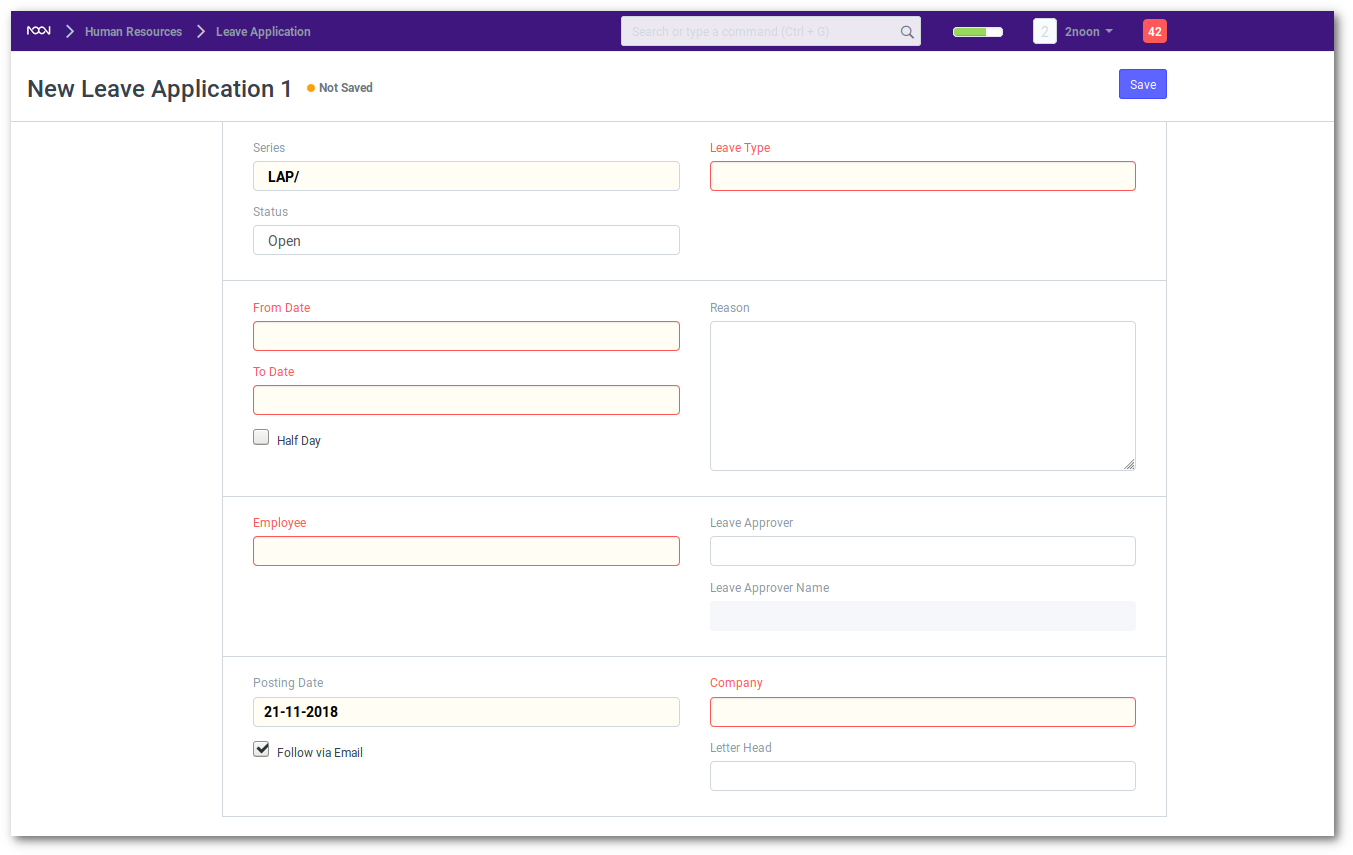Role Based Permissions
noonERP has a role-based permission system. It means that you can assign Roles to Users, and set Permissions on Roles. The permission structure also allows you to define different permission rules for different fields, using a concept called Permission “Level” of a field. Once roles are assigned to a user, it gives you the ability to limit access for a user to only specific documents.
To start with, go to:
Setup > Permissions > Role Permissions Manager

Permissions are applied on a combination of:
- Roles: As we saw earlier, Users are assigned to Roles and it is on these Roles that permission rules are applied.Examples of Roles include Accounts Manager, Employee, HR User.
- Document Types: Each type of document, master or transaction, has a separate list of Role based permissions.Examples of Document Types are Sales Invoice, Leave Application, Stock Entry, etc.
- Permission “Levels”: In each document, you can group fields by “levels”. Each group of field is denoted by a unique number (0, 1, 2, 3, etc.). A separate set of permission rules can be applied to each field group. By default all fields are of level 0.Permission “Level” connects the group of fields with level X to a permission rule with level X.
- Document Stages: Permissions are applied on each stage of the document like on Creation, Saving, Submission, Cancellation and Amendment. A role can be permitted to Print, Email, Import or Export data, access Reports, or define User Permissions.
- Apply User Permissions: This switch decides whether User Permissions should be applied for the role on selected Document Stages.If enabled, a user with that role will be able to access only specific Documents for that Document Type. Such specific Document access is defined in the list of User Permissions. Additionally, User Permissions defined for other Document Types also get applied if they are related to the current Document Type through Link Fields.To set, User Permissions go to:
Setup > Permissions > User Permissions Manager
To add a new rule, click on “Add a New Rule” button and a pop-up box will ask you to select a Role and a Permission Level. Once you select this and click on “Add”, this will add a new row to your rules table.
Leave Application is a good example that encompasses all areas of Permission System.

It should be created by an Employee. For this, Employee Role should be given Read, Write, Create permissions.

- An Employee should only be able to access his/her Leave Application. Hence, Apply User Permissions should be enabled for Employee Role, and a User Permission record should be created for each User Employee combination. (This effort is reduced for Employee Document Type, by programmatically creating User Permission records.)
- HR Manager should be able to see all Leave Applications. Create a Permission Rule for HR Manager at Level 0, with Read permissions. Apply User Permissions should be disabled.

Leave Approver should be able to see and update Leave Applications applicable to him/her. Leave Approver is given Read and Write access at Level 0, with Apply User Permissions enabled. Relevant Employee Documents should be enlisted in the User Permissions of Leave Approvers. (This effort is reduced for Leave Approvers mentioned in Employee Documents, by programmatically creating User Permission records.)

Leave Approver should be able to see and update Leave Applications applicable to him/her. Leave Approver is given Read and Write access at Level 0, with Apply User Permissions enabled. Relevant Employee Documents should be enlisted in the User Permissions of Leave Approvers. (This effort is reduced for Leave Approvers mentioned in Employee Documents, by programmatically creating User Permission records.)

HR User should be able to delegate Leave Applications to his/her subordinates HR User is given the right to Set User Permissions. A User with HR User role would be able to defined User Permissions on Leave Application for other users.
